Speak my name and I shall live forever: Jim Sullivan Memorial
Designed as a successor to the F4F Wildcat, the Hellcat's origins can be traced back in 1938, with the contract for the prototype XF6F-1 signed on 30 June 1941.
Whereas the aircraft was originally aimed to use the Wright R-2600 Twin Cyclone two-row, 14-cylinder radial engine driving a three-bladed Curtiss Electric propeller, in less than a year after the signing of the contract, BuAer directed Grumman to install the more-powerful 18-cylinder Pratt & Whitney R-2800 Double Wasp radial engine, driving a three-bladed Hamilton Standard propeller.
The type was designed to take damage and get the pilot safely back to base. A bullet-resistant windshield was used, together with armor fitted around the cockpit, the oil tank and oil cooler. A 250 US gal self-sealing fuel tank was fitted in the fuselage.
Standard armament on the F6F-3 consisted of six .50 in (12.7 mm) Browning air-cooled machine guns with 400 rounds per gun. A center-section hardpoint under the fuselage could carry a single 150 US gal drop tank, while later aircraft had single bomb racks installed under each wing, inboard of the undercarriage bays; with these and the center-section hard point, late-model F6F-3s could carry a total bomb load in excess of 2,000 lb.
The first production F6F-3, powered by an R-2800-10, flew on 3 October 1942, with the type reaching operational readiness with VF-9 on USS Essex in February 1943. Night-fighter sub variants were also developed. In total, 4,402 F6F-3s were built through until April 1944, when production was changed to the improved F6F-5.
This is the initial release of the venerable Hasegawa Hellcat, a fine kit that, despite being almost 30 years old and, understandably, superseded by newer offerings (the superb Eduard offering springs immediately up), can still easily hold its own today, its most reported issue being the slightly less pronounced chin, something that might or might not bother you.
The kit was built through our friend's Louis Gardner @lgardner Jim Sullivan Memorial, a Group created to commemorate the work of the much missed Jim.
https://modelingmadness.com/review/allies/us/usn/fighters/penf6f.htm
Blue skies Jim!
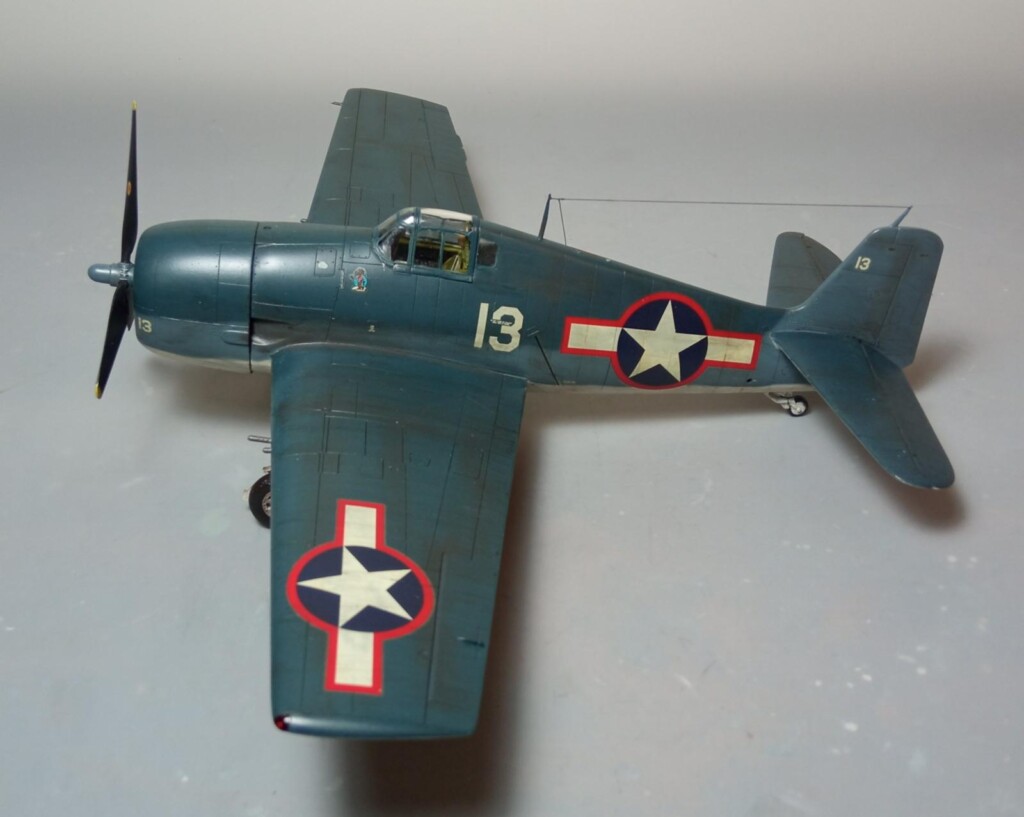
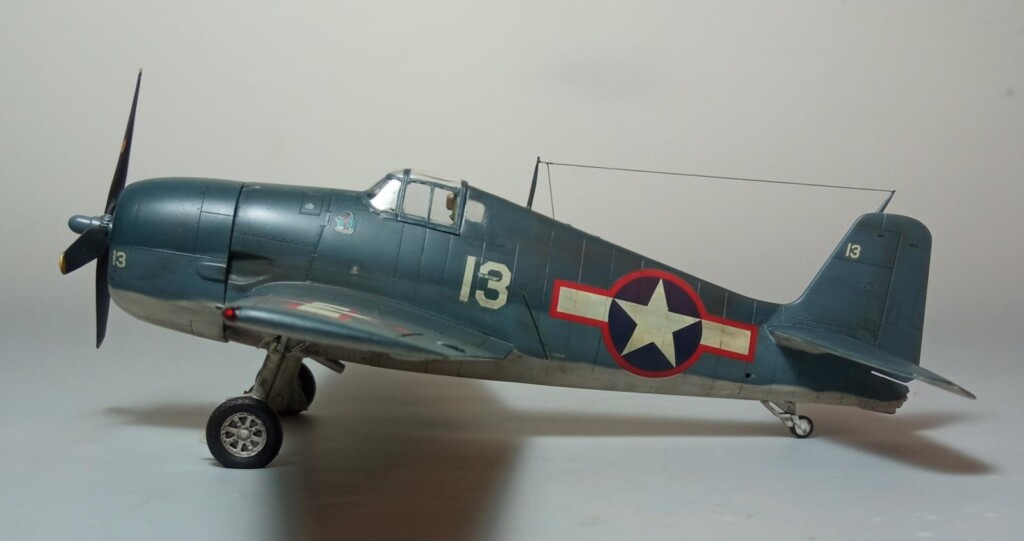
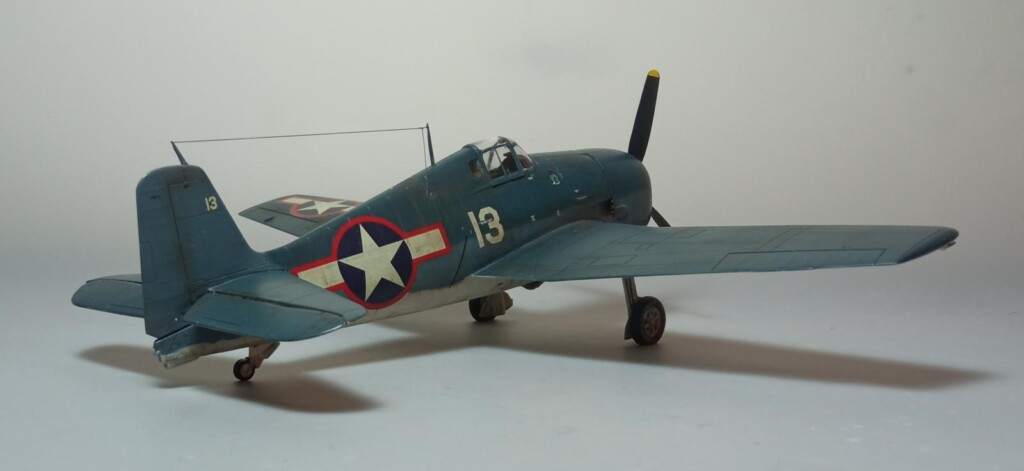

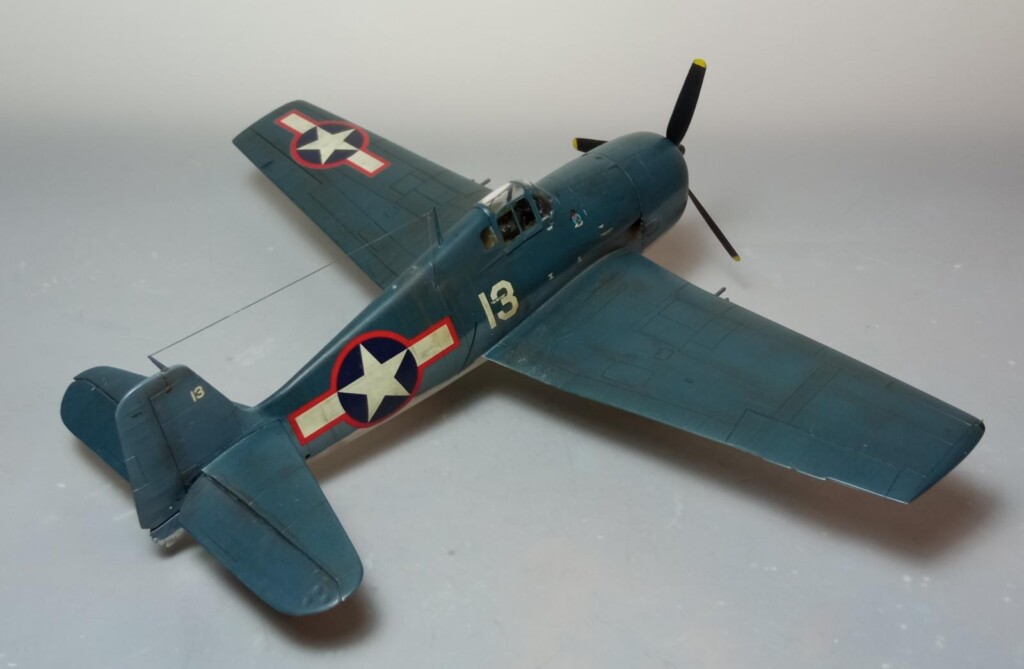
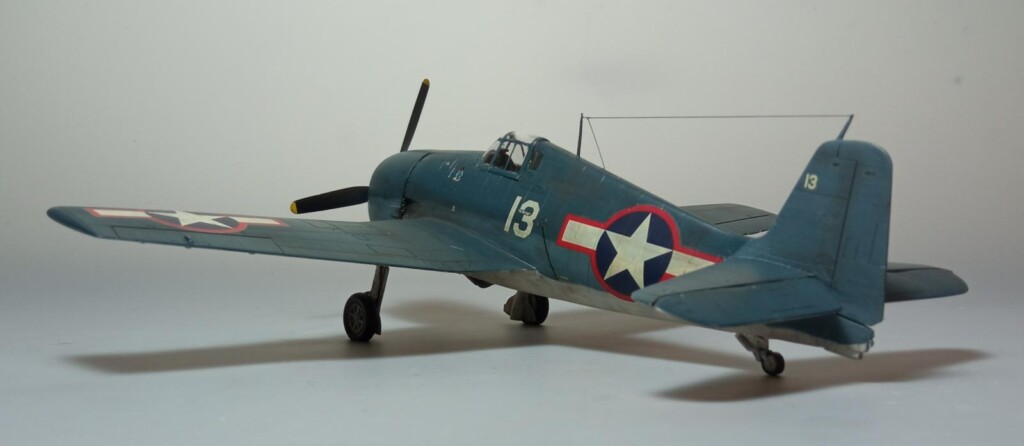

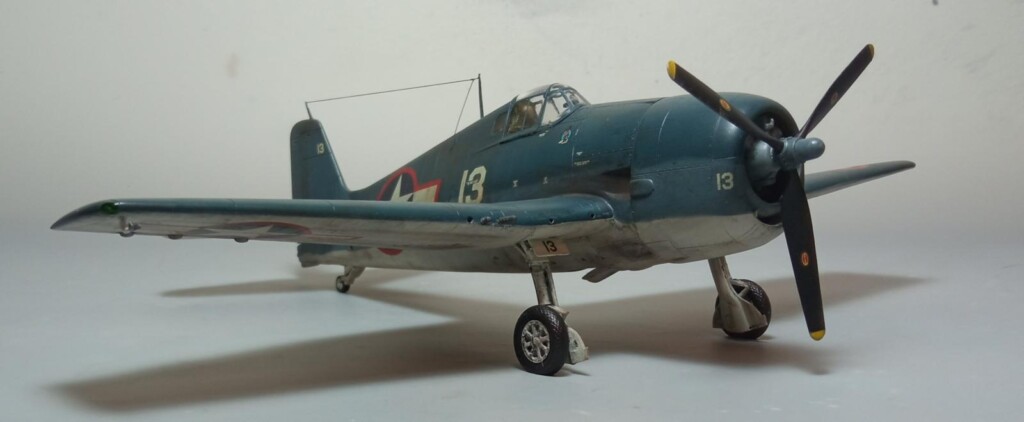
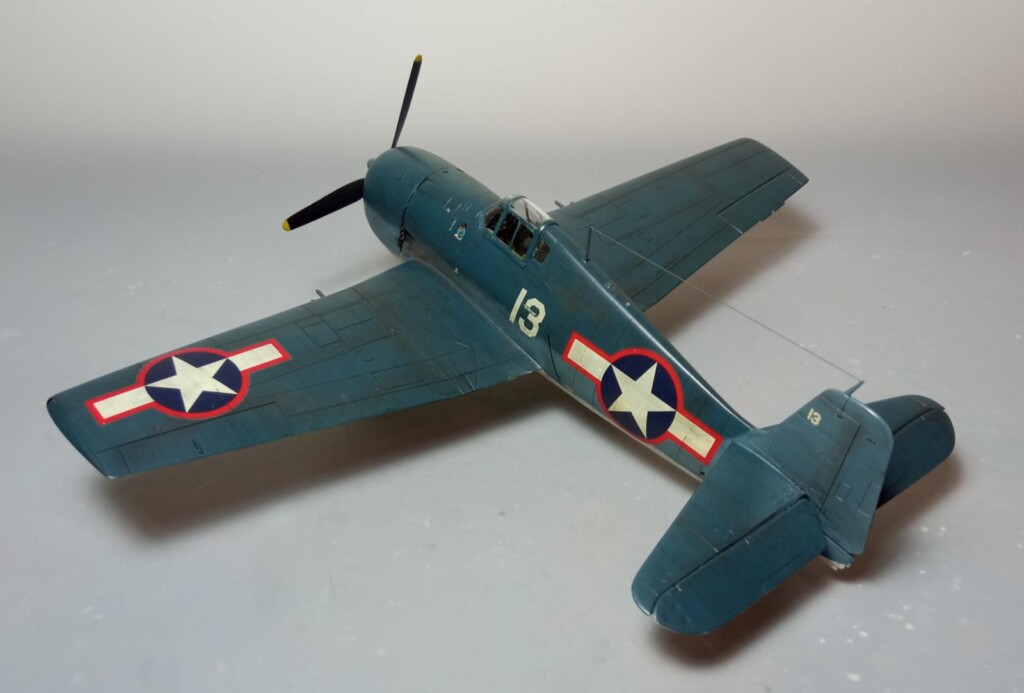
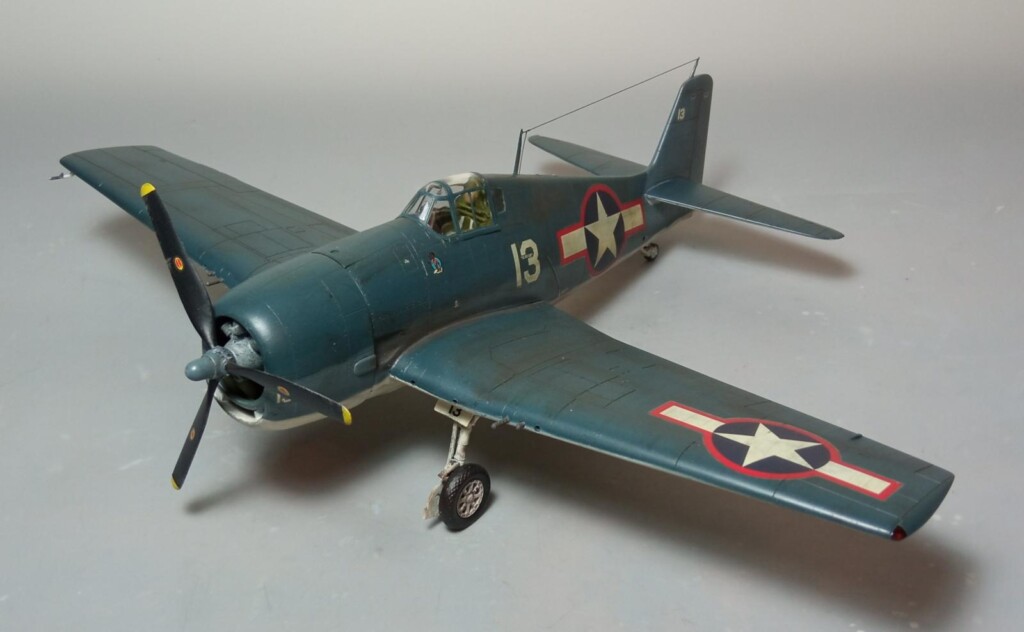

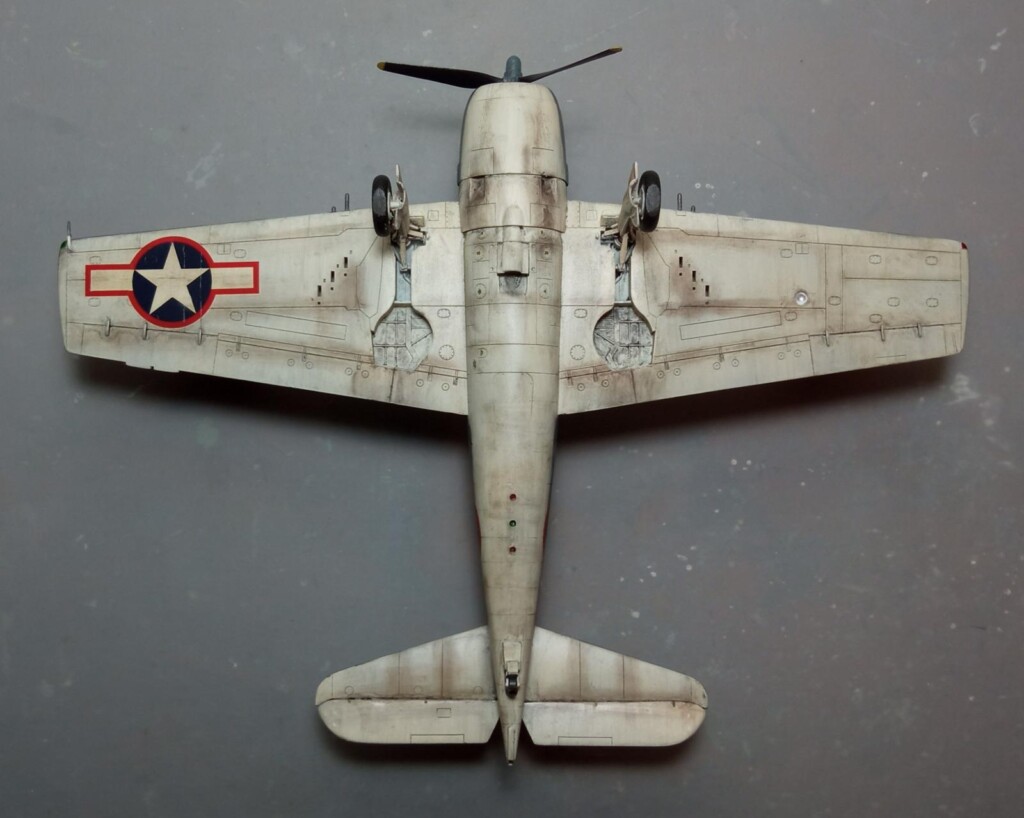
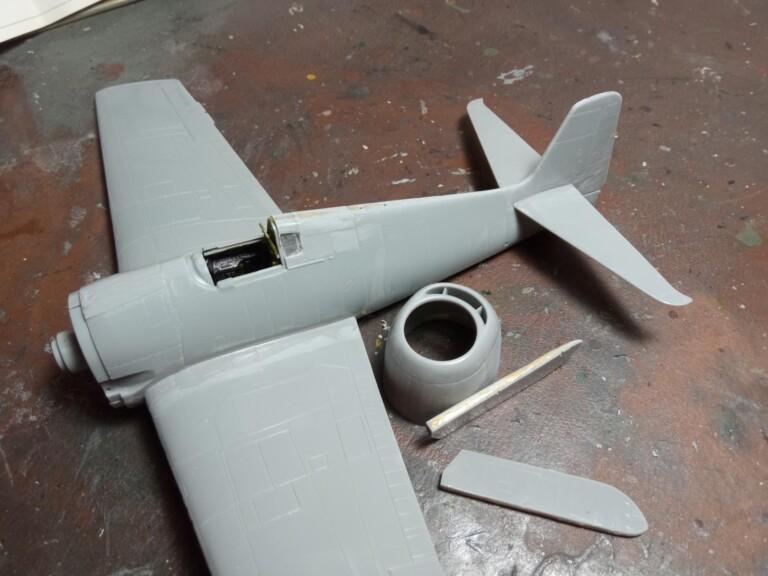
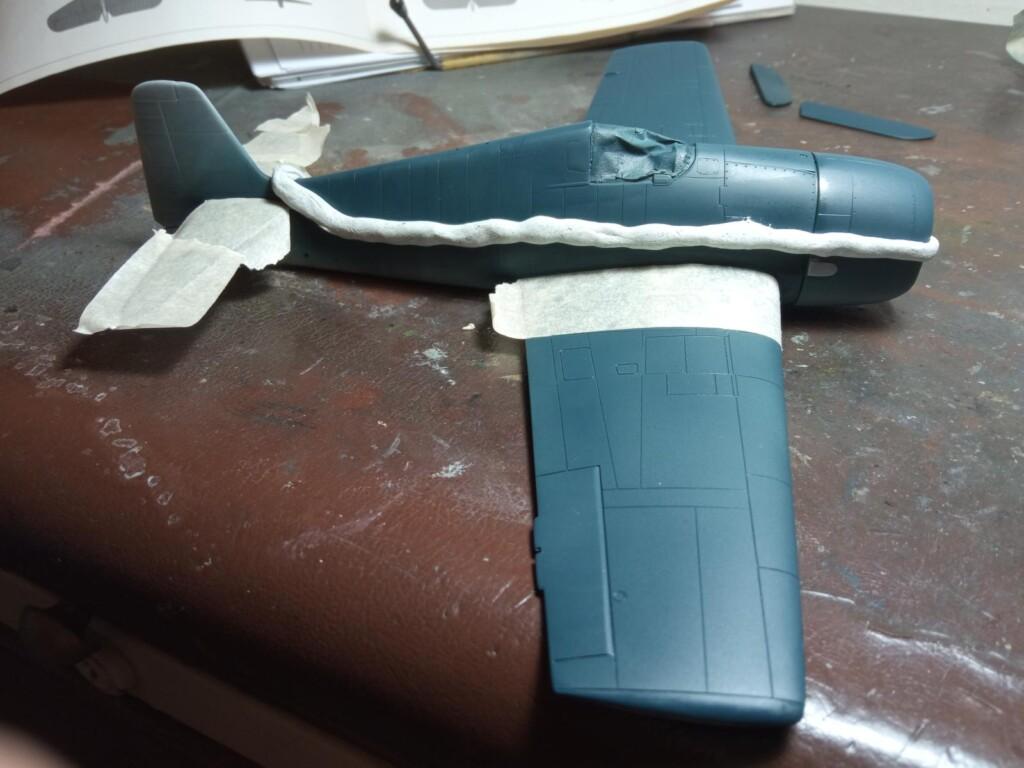
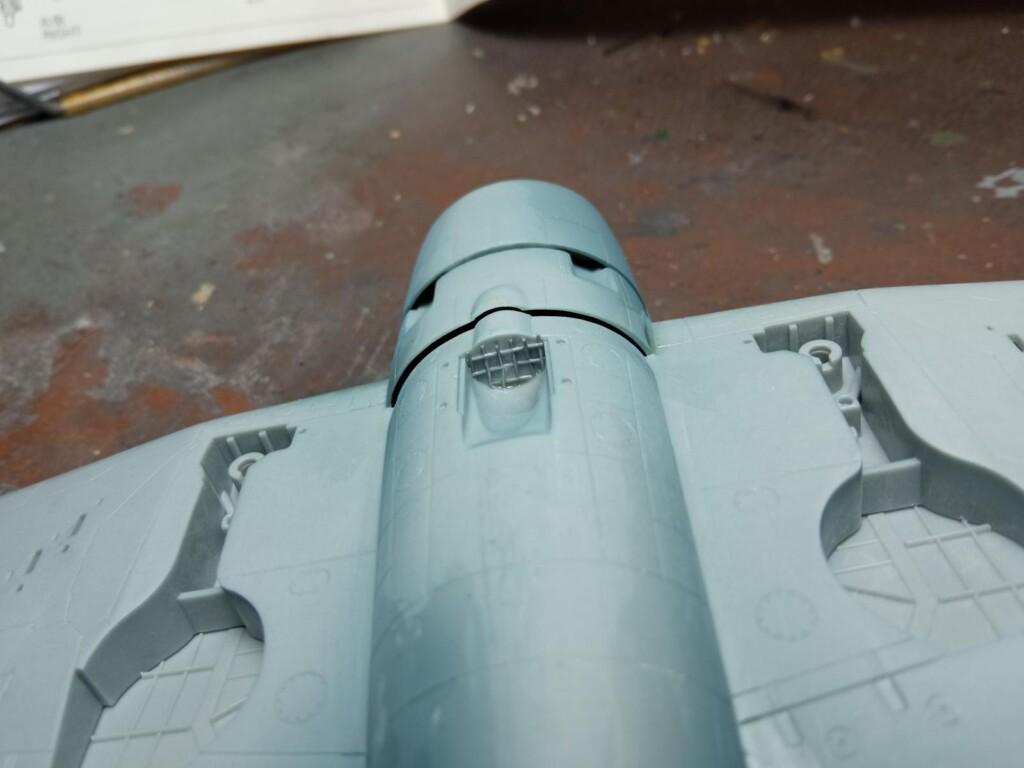

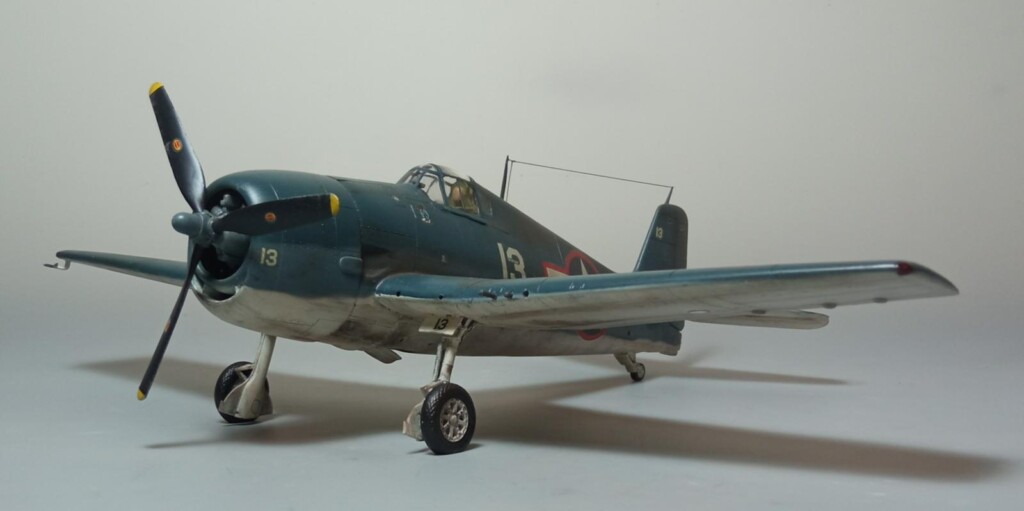
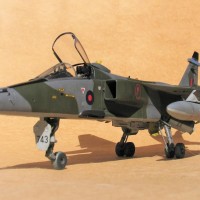
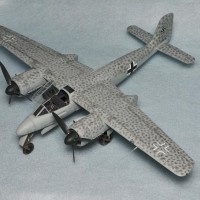
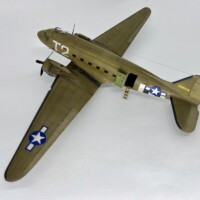
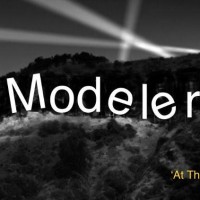
Well done, Spiros! A great honor to Mr. Sullivan
Thanks my friend @gwskat!
What a nice write-up and a lovely built Hellcat!
Awesome job, Spiros.
Thanks my friend @alfred!
Great looking Cat!
Thanks my friend @jimh!
Nicely done Spiros, I enjoyed following your WIP. Finished product looks fabulous and is a worthy tribute to JS
Thanks my friend @dbutlr!
Nicely done!
Thanks my friend @tomandrews!
A beautiful Hellcat, Spiros! I'm still trying to get to my Sullivan build...
Thanks my friend @gkittinger! Looking forward to your entry!
An absolute spectacular result, Spiros @fiveten
This is a beautiful Hellcat wearing a very nice tri-color scheme.
The supporting article is very informative and a pleasure to read.
A great honor to our friend, Jim.
Thanks my friend @johnb!
A real beauty. Mr. Sullivan would be proud!
Thanks my friend @chasbunch!
@fiveten - Fantastic work Spiros! The write up is very well done as is the build. Your weathering is incredibly realistic. There's something very cool about the red outlined star and bar. Very nice Spiros, very nice.
Thanks so much my friend @brithebuilder!
ver very nice painting! I have F6F in my bench in 1:72 scale. In the close future to build did You mask to paint tri-color scheme or free hand?
did You mask to paint tri-color scheme or free hand?
Thanks my friend @lis!
I masked the camo using masking tape for the hard demarcation lines and tack strings for the soft ones...
Some great information here regarding the Hellcat. You seem to know your subject very well. The realism on the finished build is fantastic! Great stuff.
Thanks so much @jdtruby!
Information is gathered from the net, mainly wiki.
super model love the paint job and use of blu tack I've also found that such a help with my models too and always loved the way the paint faded on these pacific aircraft
reminds me of when I was out on flight line with Fighter Collections Helcat starting up and warm up the whole thing was shaking and engine sounded like a loose bag of bolts in washing machine but that was normal they said ha ha
2 attached images. Click to enlarge.
Thanks my friend @iwantedwings! Those must have been wonderful memories, love the pics!
Uep, these things shake a lot!
Wonderful tribute Spiros, great results overall!
Thanks my friend @pb_legend!
A lovely looking Hellcat, Spiros, and an informative history of the type, I’m sure it’s exactly the kind of thing Mr Sullivan would have appreciated.
Thanks so much, my friend @chinesegeorge!
Nicely done Spiros, looks great!
Thanks my friend @roofrat!
Well done as usual Spiros, Jim would have loved it.
Thanks my friend @tom-bebout!
Nice build on this great kit, Spiros!
And a nice write-up again on the MM website.
Thanks my friend @georgeswork!
You’ve done awesome work on this F6F ! Makes me want to build one too!
Thanks my friend @ssgt!
Looking forward to yours!
Spiros Pendedekas (@fiveten)
First off, I want to thank you for the continued support for our various group builds. Jim would be proud to see this one built in his honor, as would my dearly departed friend and WW2 Naval aviator who flew with VF-16 from the Lexington, Arthur Payne Whiteway. Thank you for mentioning him in your article over at M2. They stated on his obituary notice, that he was assigned to this very plane.
He told me in person that he was assigned this particular Hellcat "on paper" and how he was responsible to make sure the maintenance and regular cleaning was done. However he also stated that they flew whatever was available at the time of the mission in his unit, VF-16, the "Fighting Airedales". I've seen a photo of "Wendy Wendorf" shortly after he had nosed this exact same plane over on a carrier landing aboard the USS Lexington, after a Japanese bullet grazed the side of his head, causing him to lose a lot of blood.
I have also found another picture showing this same plane as it was landing on the deck of the Lexington, with the engine smoking horribly, and one tire looked as if it was flat (and skidding), probably also from enemy gunfire. I often wondered who the pilot was on this day...
Like the actual plane itself, the men who flew them into combat were tough as nails,
I have watched my friends restore of full sized Hellcat from the ground up to completion, and I can tell you that your model looks outstanding, a very lifelike miniature of the real thing.
Well done my friend. VERY well done.
I'll be sure to click on a few of the various "like" buttons before I leave.
Thanks again.
Thanks o much, my friend @lgardner!
Indeed, it was due to your excellent Arthur Payne Whiteway's F6F-3 Hellcat which you built sometime in 2017 that I learned about this great pilot and the plane that was assigned to him. Once again, your provided info is invaluable.
Spiros Pendedekas (@fiveten)
Thank you for the kind words, and I'm glad to help you. It was also a real pleasure meeting Mr. Whiteway. Now in hindsight, I wish I had spent more time with him. He was the kind of person that made you feel like you knew him your whole life. A very good man.
His grand daughter commented on my build of his #13 Hellcat plane, that I posted here on Imodeler. If I ever meet anyone from his family, I will give them the model so they can remember him by.
Thanks again for the continued support, and for being a good friend too.
Another Spiros work of art , Hellcats always look cool and in the scheme you did this looks great, well done pal.
Thanks my friend @neil-foster!
Beautiful hellcat and tribute mate. Congratulations on a job well done.
Thanks my friend @paulwoodyvanacker!
Your Hellcat build of “White 13” is superb, Spiros @fiveten. The info you provided here on iModeler and over at MM is both enlightening and valuable. Well done, one once again, fellow Sullivan group participant. Grumman Cats rule!
Thanks so much, my friend @eb801!
Eric Berg (@eb801)
Spiros Pendedekas (@fiveten)
You guys have both done excellent jobs with your Hellcats ! Yes Hellcats do indeed rule...
I commend you both for your excellence and participation with our JS group.
Great looking Hellcat, Spiros!
I must build one myself one day
Thanks my friend @allonkira67!
Looking forward to yours!
Nice cat, Spiros!
Thanks my friend @j-healy!
Great looking Hellcat, Spiros. I like the shade of dark sea blue you used for the upper most part of the tricolor scheme. It has an authentic greenish tinge to it that is appealing to the eye - like the MM Acryl shade I used to use (no longer available). Flawless decal application as usual and nice beaten up undersides. These planes were put to heard use clearing the skies of the last of the Japanese scourge over the Pacific.
Thanks my friend @coling! Good old Humbrol 77 for the topsides.
Hi Spiros (@fiveten) I missed this one. It's a very impressive bit of work on an old kit and I enjoyed the MM article very much.
Thanks my friend @christopher!
What a nice write-up again Spiros, and a so lovely and well done built Cat!
It will be a good inspiration for me to make mine in 1/72 scale.
Thanks my friend @boblucio! Looking forward to yours!